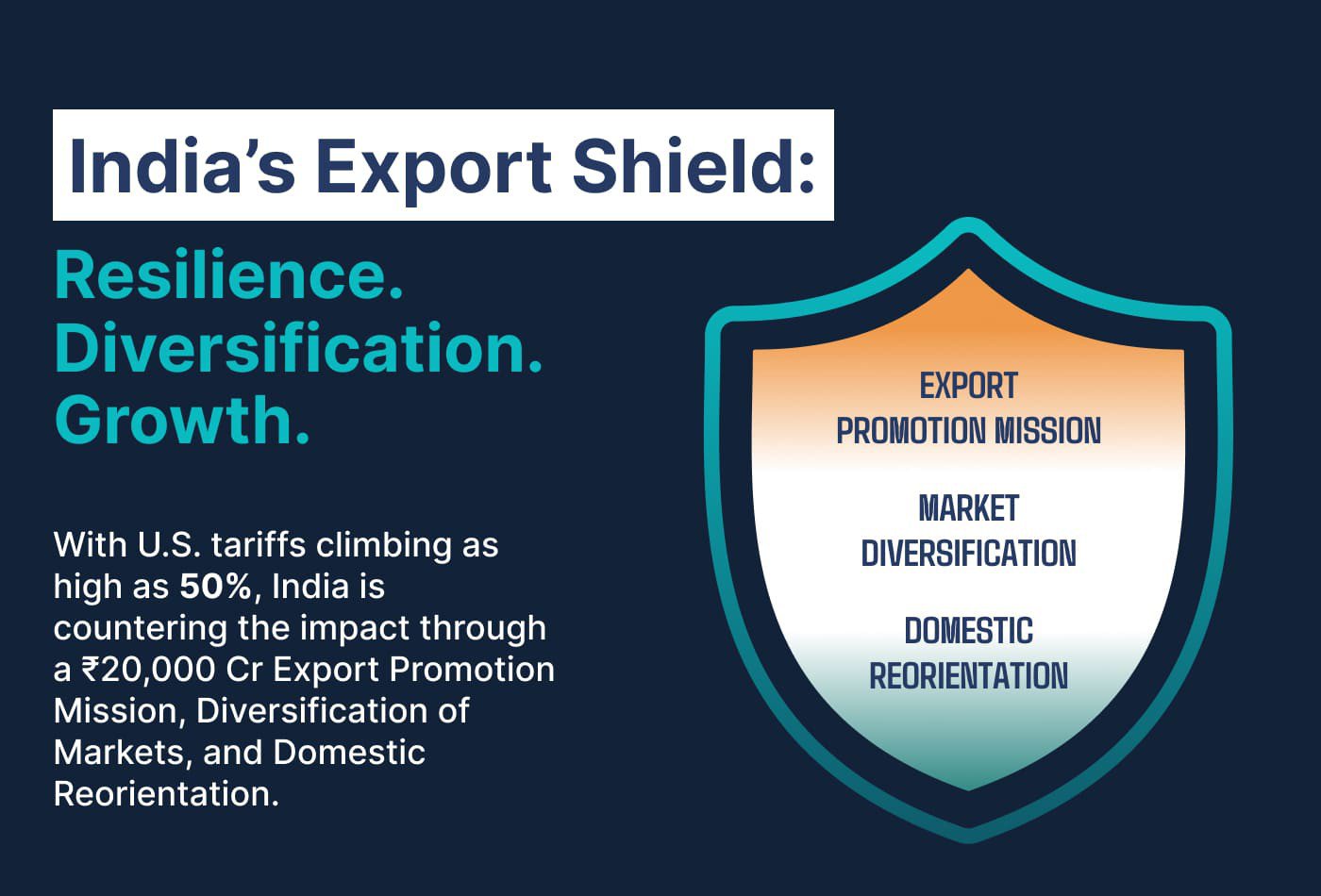
In response to mounting global trade pressures and the imposition of a steep 50% duty by the United States on Indian goods, the Indian government has established a high-level panel to thoroughly review and reform export-related barriers.
Composition & Mandate
Comprising senior officials from the Ministry of Commerce & Industry, the Finance Ministry, and representatives from leading trade bodies, the committee is reviewing:
- Customs duties and export refunds
- Export incentives and GST-related issues
- Export clearance procedures across key geographies
The goal is to streamline documentation, customs protocols, port clearances, and logistics processes, drawing on global best practices to boost India’s trade competitiveness.
Critical Context
- Export slump: In June, India’s goods exports slipped to a seven-month low of USD 35.14 billion, while imports fell to USD 53.92 billion, widening the trade deficit to USD 18.78 billion.
- U.S. tariff escalation: The U.S. has doubled the reciprocal tariffs on Indian goods—from 25% to 50%—with the additional 25% taking effect by August 27, further exacerbating export vulnerabilities.
A Three-Pronged Strategy
The government is blending short-term relief with long-term structural improvements:
- Targeted Export Promotion Mission — Expected by September, this ₹20,000 crore initiative aims to support affected sectors, enhance export credit facilities, and address non-tariff barriers.
- Diversification of Markets — Redirecting goods to alternate geographies to offset lost U.S. demand.
- Domestic Reorientation — Encouraging exporters to “promote home-grown brands” and redirect low-order products to the internal market.
Why This Matters
- Urgency of reform: With U.S. duties targeting about half of Indian shipments—ranging across textiles, jewelry, and pharmaceuticals—this committee underscores India’s strategic shift toward proactive trade governance.
- Exports at risk: The tariff shock threatens not just revenue but also employment across key manufacturing hubs. Industries are already rushing shipments to beat the August 27 deadline.
- Institutional agility: Streamlining procedures, improving policy coherence, and decentralizing support mechanisms can yield quicker relief for exporters.
At a Glance
|
Focus Area |
Implications |
|
Bureaucratic Streamlining |
Faster customs, clearer documentation, and efficient port logistics |
|
Export Policy Coordination |
Aligning incentives, GST, and refunds with exporter needs |
|
Market Resilience |
Diversifying destinations and boosting domestic absorption of exports |
|
Financial Support |
Export Promotion Mission ensures targeted credit flow and non-tariff solutioning |
This high-level panel signals a turning point—India is moving from reactive trade defense toward strategic export facilitation, ensuring its businesses remain globally competitive amid geopolitical and policy-driven turbulence.





 Get instant quote
and compare offers in real time
Get instant quote
and compare offers in real time